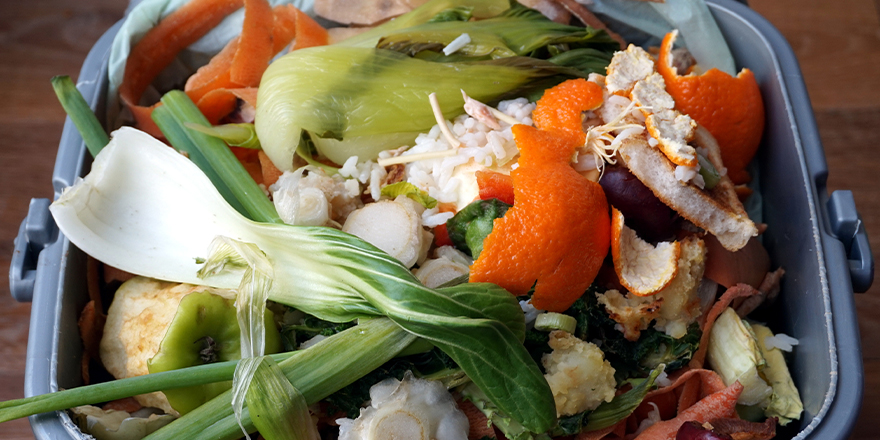Three ways technology can help reduce food waste
Learn three ways technology can help reduce food waste – with the Internet of Things (IoT), process mining, and blockchain.

Solving world hunger won’t happen overnight, and it won’t happen without equal parts compassion, creativity and innovation.
One place to start is by reducing the daily mountains of food waste around the world – which can use a helping hand from some clever technology solutions.
World hunger continues to loom, intensified by lengthy and unexpected droughts, a pandemic and unmitigated poverty. At the same time, an estimated 1.3 billion tons of food is wasted globally every year, one third of all food produced for human consumption.
Are we really throwing away one third of the world’s edible food? It is enough to feed all of the 815 million hungry people in the world, four times over. That’s a lot to swallow.
Retailers and food outlets are conscious of the issue, working with consumer apps like “Too Good to Go,” but technology can help reduce food waste even more – in three innovative ways.
1. Introducing the “Internet of Food!”
Imagine food being “smart” like our phones, TVs and cars. Hard to believe? The Internet of Things (IoT), integration and analytics all have promise that might surprise you.
Supply chain transformation, using billions of IoT connected devices, is projected to reduce global food waste by as much as 20% in the next four years. That percentage will jump to 50% by the end of the next decade.
Here’s the key with IoT: Single use “smart labels” and real-time data tracking. With the information transmitted via printed IoT circuits, batteries and cellular connectivity-capable labels, companies can actually “see” everything – from location to temperature, humidity and even oversupply of food – and prevent waste between farm and fork.
Smart farming deploys sophisticated real-time data tracking sensors to determine color, size and shape of fruits and veggies while they are still growing. This actionable data is vital in monitoring growing conditions, water supply and also optimal harvesting.
That, of course, is just the beginning. What about when wasted food gets to the garbage can? A decade ago, Scientific World Journal published an article about using RFID technology in waste management, adding the capability to sense when it’s time to pick up the trash – in essence, smart garbage cans. The tech, developing in the Republic of Korea currently, is aimed at a RFID-based garbage collection system using chips and stickers to measure the actual weight of garbage being thrown out.
A prototype RFID collection bin then communicates with a central server to request pickup. If it’s over the allowable tolerance, no pickups are requested. This in turn helps to manage the habits of organizations, restaurants and retail chains in decreasing discharge via allowable tolerances. It’s almost like the garbage can is saying “no” to waste!
In Germany, around 12 million tons of food ends up in the trash every year. Over 30% of that is destroyed in the production process. Software AG is working with partners on the Resource-efficient Intelligent Foodchain (“REIF”) project, to combat this food waste using artificial intelligence.
Cheese, bread, meat, and other food products can be efficiently produced using data-based algorithms. Machine learning helps optimize sales and production planning, as well as process and plant control systems. You can learn more about this project by clicking here.
2. Process mining for food
The idea of process discovery solving the world’s problems of hunger might seem far-fetched, but not for one of APAC’s leading meat processors. How does process mining contribute?
The meat industry operates the production of raw materials within certain national standards and regulations. Issues include a hefty amount of waste and costs – as is typical in manufacturing. Instead of industrial products, though, what gets wasted is a lot of meat.
Thanks to process mining, the potential savings and reductions at this meat producer were estimated to over $800,000 per year. Turnaround times for meat products even improved by about 30%. The key takeaway on process mining’s discovery was the need for newer, more efficient cold storage.
Because if turnaround times increase, product can last that much longer. Better transparency reveals any discrepancy between expected and actual production volume. Adding it all up results in a significant improvement, which also benefits the overall production from cost to quality.
3. Blockchain: The top of the food chain
Segueing from data mining and analytics, unlocking the power of blockchain technology might be just the boost the food industry needs, hopefully leading to a sustainable ecosystem. But how? Through supply-demand algorithms.
Whereas process mining seeks to discover newer, more efficient pathways, distributed ledger technology (DLT) or blockchain ensures those pathways remain clear and secure. The immediate tracking and transfer of data via blockchain ensures that a flour producer can verify every single shipment down to the granular details: harvesting time, conditions, transit points, freshness preservation methods, etc.
Human error then becomes a thing of the past. With a decentralized hub capable of automating the transparency the blockchain enables, you can expect food suppliers to pick up the slack and eliminate their own inefficiencies just to keep up. As a matter of fact, Walmart has been working on leveraging the blockchain to accurately track produce supply chains.
It is amazing to think that technology can play even a small role in something as fundamentally devastating as world hunger. But with a little creativity, connections – and perhaps, some simplicity – it can be possible to leverage the power of technology to do enterprising things. Like fill a pantry with good food.
So, today, the first ever observance of the UN’s International Day of Awareness of Food Loss and Waste, is a great time to think about what your company can do with technology to reduce food (and other) waste.
Wouldn’t it be remarkable to be a part of the solution to world hunger?
See how Software AG can help by clicking below.